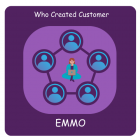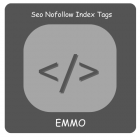Creating an Ecommerce Content Strategy to Drive Traffic and Increase Sales

Creating an Ecommerce Content Strategy to Drive Traffic and Increase Sales
Table of Contents
- Understanding the Importance of Content in Ecommerce
- Defining Your Target Audience for Maximum Impact
- Choosing the Right Content Types for Your Ecommerce Site
- Creating SEO-Optimized Content to Attract Traffic
- Building a Content Calendar to Stay Consistent
- Leveraging Social Media for Content Distribution
- Analyzing and Adapting Your Content Strategy Based on Performance
- Tips for Scaling Your Content Strategy as Your Business Grows
Understanding the Importance of Content in Ecommerce
Content is the foundation of a successful ecommerce business. It helps build trust with your audience, engage potential customers, and ultimately drive more traffic and sales. Think beyond basic product descriptions; effective ecommerce content creates a brand story, giving your customers reasons to connect with your business and feel confident about buying from you. A well-thought-out content strategy can improve your site’s SEO, making it easier for customers to find you on search engines, and enhance the customer experience on your site, increasing conversion rates.
By consistently delivering valuable content like blog articles, product guides, videos, and social media posts, you make your brand a resource that customers rely on for information and inspiration. This approach can drive repeat visits, build brand loyalty, and attract a broader audience, especially if your content is shareable and engaging.
Defining Your Target Audience for Maximum Impact
Knowing your target audience is critical to creating content that resonates and converts. Start by defining your ideal customer with attributes like age, location, interests, shopping behavior, and preferred content channels. For instance, younger shoppers may favor quick, visual content on social media, while older audiences might appreciate detailed product guides.
Use data from your current customer base, website analytics, and customer feedback to develop personas that represent your ideal customers. With this understanding, you can tailor your content to speak directly to their needs and interests. The more specific and tailored your content is to your target audience, the more effective it will be in drawing their attention, holding their interest, and encouraging them to purchase.
Tip
If you offer your SEO texts in several languages or localize them for different regions, your pages may be incorrectly classified as duplicate content. However, there is a simple solution to this in the form of hreflang. Our article explains what you need to bear in mind when using hreflang.
Read more about hreflangChoosing the Right Content Types for Your Ecommerce Site
Different content types serve different purposes, so choose a mix that appeals to your audience and aligns with your business goals. Some popular ecommerce content types include:
Blog posts: Great for SEO and providing in-depth information on topics your audience cares about.
Product guides: These detailed guides can help customers make purchasing decisions and showcase your products’ benefits.
How-to videos: Videos demonstrate products in action, making them highly engaging and shareable..
Customer testimonials and reviews: Social proof, such as testimonials and reviews, builds trust and showcases the positive experiences of other customers.
User-generated content: Encourage customers to share photos or videos with your products on social media, which can be repurposed on your site for authenticity.
Email newsletters: Keep your audience engaged and informed with regular updates, offers, and content tailored to their interests.
Creating SEO-Optimized Content to Attract Traffic
SEO is essential to make your content discoverable in search engines, bringing organic traffic to your ecommerce store. Start with keyword research to identify terms that potential customers search for, related to your products or niche. Tools like Google Keyword Planner, Ahrefs, or SEMrush can help you find valuable keywords with high search volume and reasonable competition.
Once you have your keywords, strategically incorporate them into your content—titles, headings, meta descriptions, image alt tags, and naturally throughout the body. However, avoid keyword stuffing, which can harm your rankings. Instead, focus on creating valuable, informative content that answers customers' questions and aligns with their intent. By producing SEO-friendly content consistently, your site can gain better visibility in search results, driving more targeted traffic to your products.
Building a Content Calendar to Stay Consistent
Consistency is key to a successful content strategy, and a content calendar helps you maintain it. A well-organized calendar lets you plan, schedule, and track your content so that you can release it at the optimal times. Start by determining how often you want to publish—weekly blog posts, daily social media updates, or monthly newsletters, for example.
Map out specific themes or topics for each month, season, or product cycle. Include details like content type, platform, target keywords, deadlines, and who’s responsible for creation. A content calendar keeps your team on the same page, ensuring that content is produced and published on time and that it aligns with your marketing campaigns or seasonal trends. It also allows you to repurpose high-performing content, saving time and extending the reach of your best posts.
Leveraging Social Media for Content Distribution
Social media platforms are powerful channels for distributing ecommerce content and reaching a broader audience. Identify which platforms your target audience uses the most—Instagram, Facebook, Pinterest, or TikTok, for example—and tailor your content accordingly. Visual platforms like Instagram and Pinterest work well for product images, how-tos, and user-generated content, while Facebook is useful for longer posts and discussions.
Engage with your audience by creating interactive content, like polls, live videos, or stories. Social media also provides an excellent opportunity for collaboration with influencers and brand ambassadors who can expand your reach and bring credibility. Regularly share new blog posts, promotions, and product updates on these channels, and encourage user-generated content to foster a community around your brand.
Analyzing and Adapting Your Content Strategy Based on Performance
A successful content strategy requires continuous improvement. Analyze key performance metrics like page views, bounce rate, social shares, time on page, and conversion rates to gauge the effectiveness of your content. Google Analytics, social media insights, and content management systems often provide in-depth data on how users interact with your content.
Use this data to identify what works and what doesn’t. Are there certain blog topics that attract more traffic? Do specific social media posts get more engagement? This information lets you adjust your strategy, focusing on content types and topics that perform well and experimenting with new formats where engagement is lower. Regular analysis ensures your strategy remains relevant and effective, helping you to boost traffic and drive sales.
Tips for Scaling Your Content Strategy as Your Business Grows
As your business expands, your content strategy should scale to keep up with your growing audience and diversified offerings. Invest in tools and technology like content management systems, project management software, and analytics platforms to streamline content creation and publishing. Expanding your team—bringing in writers, designers, and social media managers—can help maintain content quality and consistency at scale.
Additionally, consider introducing more sophisticated content, like webinars, comprehensive guides, or live Q&A sessions, to further engage your audience. Repurpose high-performing content into different formats to maximize its reach across platforms. As you scale, stay aligned with your brand’s core message to ensure that your growing content library remains cohesive and continues to reflect your brand’s unique identity.
| Creating an Ecommerce Content Strategy to Drive Traffic and Increase Sales | |
|---|---|
| 1. Understanding the Importance of Content in Ecommerce | Content is the foundation of a successful ecommerce business. It builds trust with your audience, engages potential customers, and drives more traffic and sales. High-quality content, like blog articles, product guides, and social media posts, can improve your SEO, making it easier for customers to find your products, and ultimately boosting conversion rates. |
| 2. Defining Your Target Audience for Maximum Impact | Knowing your target audience allows you to create content that resonates with them. Define your ideal customer’s age, location, interests, and shopping behaviors. This lets you create tailored content that draws attention, holds interest, and encourages purchases. |
| 3. Choosing the Right Content Types for Your Ecommerce Site | Select a mix of content types to appeal to your audience and achieve business goals. Options include blog posts for SEO, product guides, how-to videos, customer testimonials, user-generated content, and email newsletters for ongoing engagement. |
| 4. Creating SEO-Optimized Content to Attract Traffic | Start with keyword research to identify terms your audience searches for. Use these keywords in your content titles, headings, and descriptions to improve search visibility, attracting organic traffic to your store. Focus on creating valuable content that answers customer questions and aligns with their intent. |
| 5. Building a Content Calendar to Stay Consistent | A content calendar helps maintain consistency. Plan and schedule content releases based on themes, product cycles, and seasonal trends. This ensures timely content and allows repurposing high-performing content for extended reach. |
| 6. Leveraging Social Media for Content Distribution | Identify where your audience spends time online—Instagram, Facebook, Pinterest, or TikTok—and tailor content for those platforms. Regularly post updates, encourage user-generated content, and collaborate with influencers to expand your reach and credibility. |
| 7. Analyzing and Adapting Your Content Strategy Based on Performance | Regularly analyze metrics like page views, bounce rate, and conversions to understand content performance. Use insights to refine your strategy, focusing on high-performing topics and experimenting with new formats as needed to increase traffic and sales. |
| 8. Tips for Scaling Your Content Strategy as Your Business Grows | As your business grows, expand your team and use tools to streamline content creation. Add advanced content like webinars and comprehensive guides, repurpose high-performing content, and ensure your expanding content library remains aligned with your brand message. |
FAQs
What Is the Importance of Content in Ecommerce?
Content is the foundation of a successful ecommerce business. It builds trust, engages customers, and drives traffic and sales. Beyond basic product descriptions, effective content creates a brand story, helping customers connect with your business and feel confident in their purchases.
How Do I Define My Target Audience?
Knowing your target audience is critical for creating resonant content. Define your ideal customer by attributes such as age, location, interests, and shopping behavior. Use data from your current customer base and analytics to develop personas that guide your content strategy.
What Types of Content Should I Use for My Ecommerce Site?
Popular ecommerce content types include blog posts for SEO, product guides for decision-making, how-to videos for engagement, customer testimonials for trust, user-generated content for authenticity, and email newsletters for audience engagement.
How Can I Create SEO-Optimized Content?
Start with keyword research to identify valuable search terms. Incorporate these keywords naturally into your titles, headings, and content. Focus on creating informative content that answers customer questions, avoiding keyword stuffing to maintain content quality and relevance.
Why Is a Content Calendar Important?
A content calendar helps you maintain consistency in your content strategy. It allows you to plan, schedule, and track your content, ensuring timely publication aligned with marketing campaigns and seasonal trends while helping to repurpose high-performing content effectively.
How Can I Leverage Social Media for Content Distribution?
Identify the social media platforms your audience uses most and tailor your content for each. Engage your audience through interactive content and collaborations with influencers. Regularly share blog posts, promotions, and encourage user-generated content to build a community around your brand.
How Do I Analyze and Adapt My Content Strategy?
Continuously analyze performance metrics such as page views, bounce rates, and conversion rates to gauge content effectiveness. Use this data to refine your strategy, focusing on high-performing content types while experimenting with new formats to boost engagement.
How Can I Scale My Content Strategy as My Business Grows?
As your business expands, invest in tools for content management and analytics. Consider expanding your team to maintain quality and consistency. Introduce sophisticated content formats and repurpose successful content across different platforms to maximize reach while staying true to your brand’s identity.










